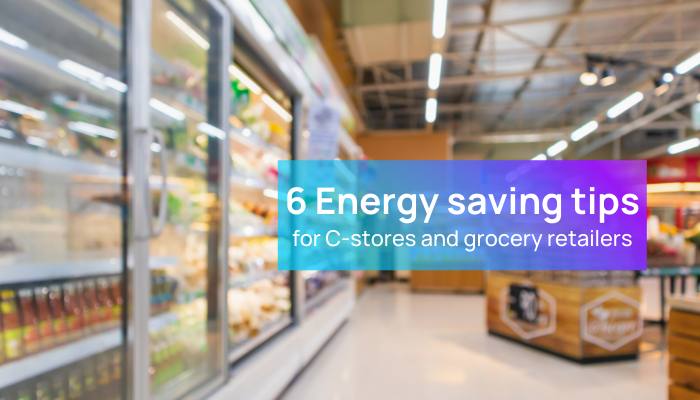The home of smart buildings, smart equipment and IoT

There are plenty of ways for retailers to rack up large energy bills throughout the work day but for convenient stores and similar retailers, just keeping your products cold is one of the biggest costs of them all. According to the U.S. Small Business Association, cooling costs can account for up to 60% of total electricity consumption in facilities that rely on commercial refrigeration. So how do you keep costs down when your business model relies on equipment that is inherently energy inefficient? These energy savings tips will help.
Having an energy audit performed by the local power company is a great place to start. Their technicians can assess your energy usage and pinpoint waste or large areas of consumption. This type of audit might reveal that your refrigeration units are sucking up more power than the average unit and may need to be repaired or upgraded to an Energy Star Certified unit. Energy Star certified appliances can save operators a minimum of 30% on refrigeration costs.
In addition to the energy audit, check your equipment to ensure it’s in proper working order. Leaky gaskets and seals for example are a huge source of energy waste as they let cool air escape and warm air in, causing your refrigeration units to work overtime. Air filters that are not regularly changed can also cause an increase in energy consumption.
Refrigeration isn’t the only energy consumer, lighting also plays a role. Switching to LED lights can help in multiple ways. First, they use less energy and second, they generate less heat, which helps keep units from working harder. LEDs also improve visibility for consumers, meaning those refrigerator doors are opening less often, giving your cooling units a break.
A lighting control system is also a huge cost saver and helps ensure your lights are on a schedule so the lights are only on when necessary. This eliminates waste and gives you more control over your lighting.
Sensors can go a long way towards saving energy costs. Many retailers install sensors in various ailes so that when no one is in the aisle, the lights go out. Sensors can be installed in walk-in coolers so that the light is only on when someone is inside. Sensors can also be used to alert facility managers when a door is ajar.
When it comes to refrigeration, if a piece of equipment fails and you don’t catch it in time, you risk losing all of the inventory it was supposed to be keeping cold. Having alarms for your equipment can help notify the necessary parties so that you know right away when a piece of equipment needs attention, a schedule fails, or a unit gets above or below a certain temperature. It can also help you be more proactive, preventing major problems by catching things before they go seriously wrong.
Smart alarm examples include:
Being able to manage your building from anywhere can be a huge resource saver. Remote access allows building operators to access building controls and data remotely, eliminating the need for on-site visits. This allows for faster reaction time if and when there’s an incident that needs immediate attention. It also saves you a truck roll by allowing technicians to analyse and run diagnostics tests remotely before coming out for a repair. Sometimes the problem can be diagnosed and solved remotely with no need for a truck roll at all.
You don’t have to be a giant retailer to have a Building Management System (BMS). Having an integrated solution can help you manage your building efficiently all from one place. This means having access to controls, HVAC, data and alarms all at your fingertips and accessible from anywhere. An integrated solution helps put processes in place and gives you more control over your building so that you can make data driven improvements. BMS also delivers insights into how your equipment is operating and being maintained and how energy efficient your site is overall. Ultimate control, flexibility, and data right at your fingertips can not only make managing your building and equipment easier, it can lower your carbon footprint and save energy costs.
FIN microBMS application suite delivers the benefits of a BMS without the cost and complexity to make your buildings smart, connected, comfortable and efficient.
Scott joined J2 Innovations as a partner in 2011, and is now Vice President of Customer Experience. He has a wide range of responsibilities including evangelism, business development, training, and operational excellence. Scott is well known as an industry expert in smarthomes and smart buildings. He is a past president of ASHRAE, and is currently a board member for Project Haystack. Scott attended Clarkson University for Mechanical Engineering and graduated with a BS/Business in Organizational Innovation.
Topics from this blog: FIN microBMS Smart Buildings Smart Equipment
Back to all posts
J2 Innovations Headquarters, 535 Anton Blvd, Suite 1200, Costa Mesa, CA 92626, USA. Tel: 909-217-7040